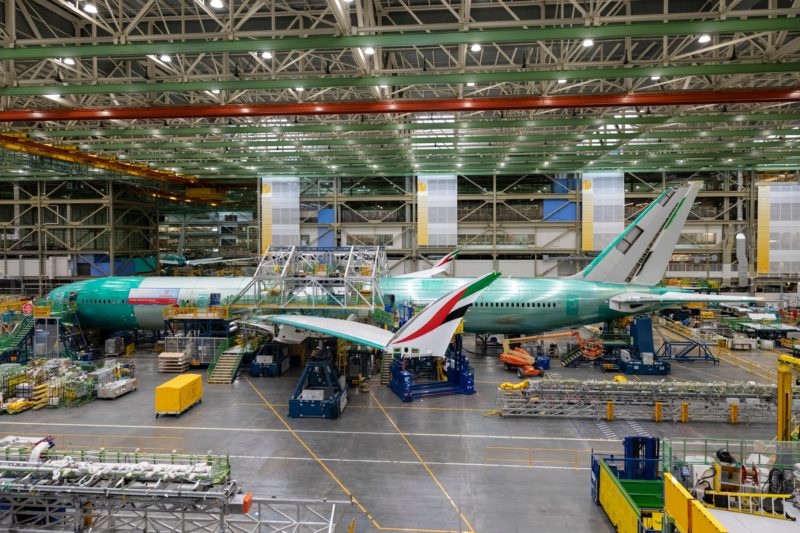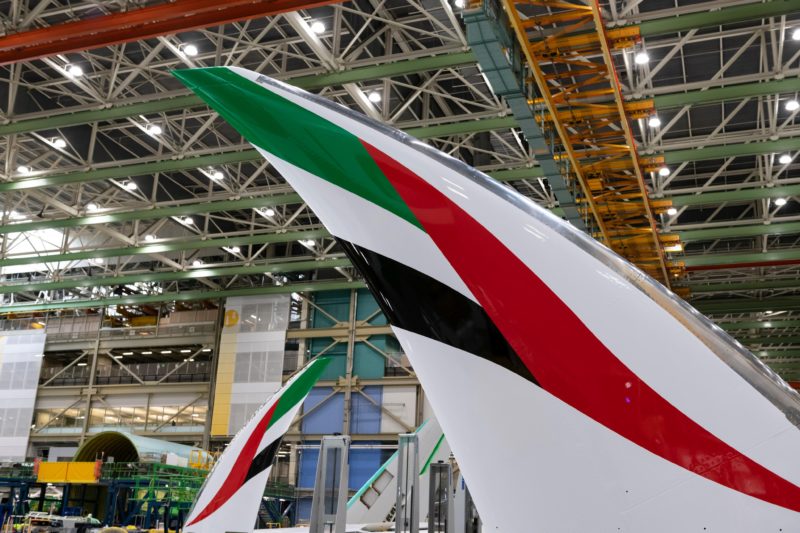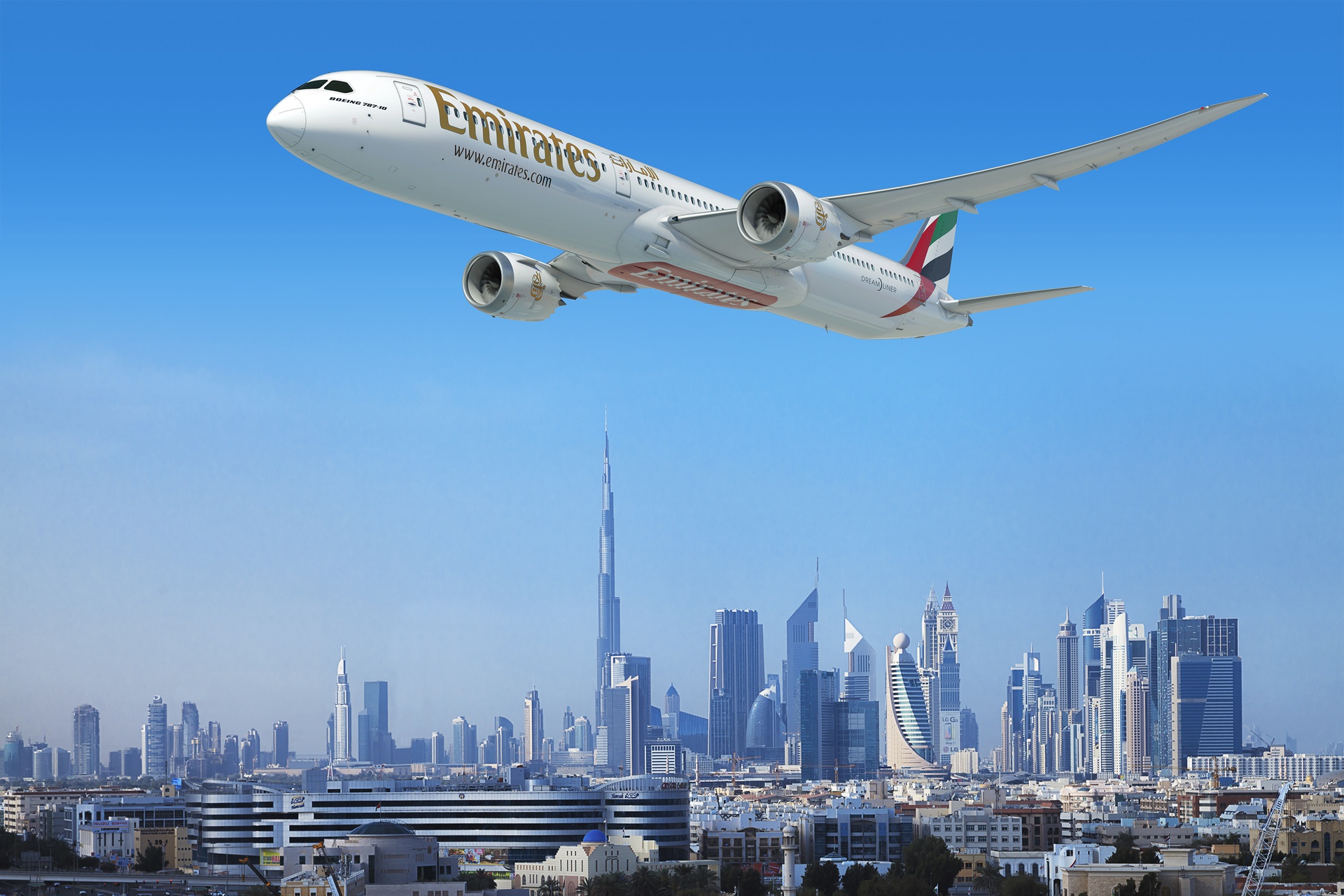As the Dubai-based carrier Emirates is reportedly deciding to substitute more of its Boeing 777X orders in favour of the Boeing 787, does this signal the start of Emirates veering away from its successful operating model of the past 15 years?
Based on the recent developments linked to COVID-19, the extremely high dependency on transfer traffic is a great danger for each of the successful Gulf airlines. Emirates will and have to look at expanding its point-to-point services. In other words, Emirates cannot rely on that previously successful operating model over the past 15 years anymore. If the airline wanted to remain competitive in the next 15 years, the entire operating model had to be reshuffled by shifting more towards point-to-point traffic, rather than rely on the competition-intense transfer traffic and increasingly complex post COVID-19 network.
Shifting Focus Towards Point-To-Point
At first glance, Emirates’ successful business and operating model has changed due to COVID-19. Adel Al Redha, Chief Operating Officer (COO) of Emirates, told to Bloomberg that prior to the breakout of COVID-19, 70% of Emirates’ traffic were connecting transfers via Dubai. However, during the pandemic Al Redha noted it is now an even 50% split between connecting transfers and point-to-point traffic. To date, Emirates still operates a downsized network and due to the massive and sustained slump in travel demand, passenger load factors on Emirates’ planes are now hovering around 40-43%. Before the onset of the pandemic, Emirates served 157 destinations in its network. According CAPA, the actual number of destinations served are 80 (as of August 26th, 2020).
The introduction of the efficient Boeing 787-9s with a moderate capacity could help Emirates to boost the local traffic to Dubai. With both aircraft types Emirates could also get better access to thinner markets from Dubai as Etihad and Qatar do with their mixed fleet. The growing partnership with Emirates’ sister flydubai (single fleet type with 737s) could contribute to these future developments.
Dubai has laid out plans to attract local traffic, as the vibrant city is an established destination for tourism, health tourism, meetings, incentives, conferences, and exhibitions (MICE), business and the EXPO2020 next year, which was postponed due to COVID-19. On the top of that, the recent normalization of the UAE-Israel ties could contribute to the growth in both local and connecting traffic between Israel, the UAE and beyond on all levels. The historic deal will gain a new stream of travellers that could help Emirates‘ hub Dubai partly bounce back from the COVID-19 crisis, driven by the direct access to new markets like Israel with a large Jewish diaspora across the globe. These market conditions could help Emirates to restore their sixth freedom international network during the recovery phase (Israel – Dubai – Asia/Africa/Australia).
In the Arab World, the UAE is China’s most important trade partner and Bilateral trade between China and the UAE will continue to surge in the coming years on the back of strong relations between the two countries before, during and after the pandemic. We might witness additional Chinese destinations in Emirates’ network in the post COVID-19 era (e.g. Chengdu) which could be well served with a 787-9 or A350. Nevertheless, at the end of the day, any form of cooperation depends on foreign regulatory approval for codeshares or route integration.
Causes And Triggers For Choosing The 787-9s
We all know that the Boeing 787 Dreamliner has been a revolutionary aircraft to date. It has allowed low-cost long-haul carriers to exist and provided a path for ultra long-haul routes. Naturally, the 787 Dreamliner was not initially designed to be a competitor of the 777, the so-called workhorse. As air travel demand has plummeted, the 787 is an increasingly attractive proposition in these tough operating conditions during and after the pandemic. Pre COVID-19 passenger levels would only return in 2024/2025, therefore airlines should deploy much less capacity-intense aircraft in the upcoming months and years.
Additionally, the 787-9 has a clear range advantage when compared with the 777-9, capable of covering a maximum flown distance of 7,530 nmi (13,950 kilometers) versus 7,285 nmi (13,500 km) for the latest addition to the 777 family (Rytis Beresnevicius, 2020). The extended range provides Emirates greater flexibility in the reshaping process of its network, including ultra long-range operations (previously operated by Emirates’ Boeing 777-200LR).

Qatar Airways’ and Etihad Airways’ main advantage for having a heterogeneous fleet of 100-seater (A319) to 500-seater (A380) and medium-sized efficient jets such as the Airbus A350 or Boeing 787 Dreamliner, with less than 350 seats, has been realised by Emirates lately, because these aircraft can be used flexibly across the entire route network of both major competitors. The Dreamliner’s versality could offer the UAE carrier more operational flexibility, providing the carrier with the abilitiy to deploy these widebody aircraft on thinner long-haul routes in Emirates’ current and future network.
Last but not least, one of the most influential causes and triggers for the recent switch up of Emirates’ Boeing orders are also the cost advantages of the Boeing 787 over the Boeing 777X and it has to be taken into account.
Cost Advantage Over Boeing 777X
The Boeing 787-9 is more cost effective. With a lower base list price and lighter fuselage than the 777-9, the economics stack in the Dreamliner’s favour. At a time when airlines are seeking to become more cost efficient, Emirates would benefit from a greater opportunity to operate profitable flights, having fewer seats to fill at a lower operating cost. Larger aircraft like the 777-9 would be more costly to operate if seats go unsold, or if seasonal demand disappears. Rytis Beresnevicius stated that the challenge to attract passengers to fill the larger cabins of this aircraft could force Emirates to revert to its hub-and-spoke model which has been compromised by the current pandemic. As it is the case with the Airbus A380s, flying semi-empty, 777Xs around the world is not economically profitable at all and it has to be avoided by Emirates. On various routes across Emirates’ network, the 787 would be far more efficient (flying further on less fuel) and it is useful in mid-markets between two cities, such as long-haul routes with less demand during the post COVID-19 recovery phase.

On the other hand, “integrating the 787 into Emirates’ fleet would be capital-intensive”, as reported by Rytis Beresnevicius on AeroTime News. Emirates would have to either hire or retrain its pilots, cabin crew and maintenance staff. Additionally, spare parts and maintenance, repair and overhaul resources will have to be built up. This could be avoided by choosing the 777X, as it belongs to the Boeing 777 family. However, from a medium- and long-term perspective, the cost advantages are speaking for the Boeing 787s.
Conclusion
In the post-COVID-19 era, the entire aviation landscape will change network-wise. Further consolidations and JV partnerships will lead to decentralisation and a higher proportion of point-to-point traffic. Even airlines like Emirates have to consider potential JV partnerships with other airlines (e.g. with one of the three biggest US carriers). Additionally, there will need to be a reduction in capacity and/or frequency of various airlines. Emirates’ decision to swap the 777-9s for 787-9s is fully reasonable, since they’ve learnt a lesson from the current pandemic (e.g. fleet inflexibility due to only large aircraft 777s and A380s).




